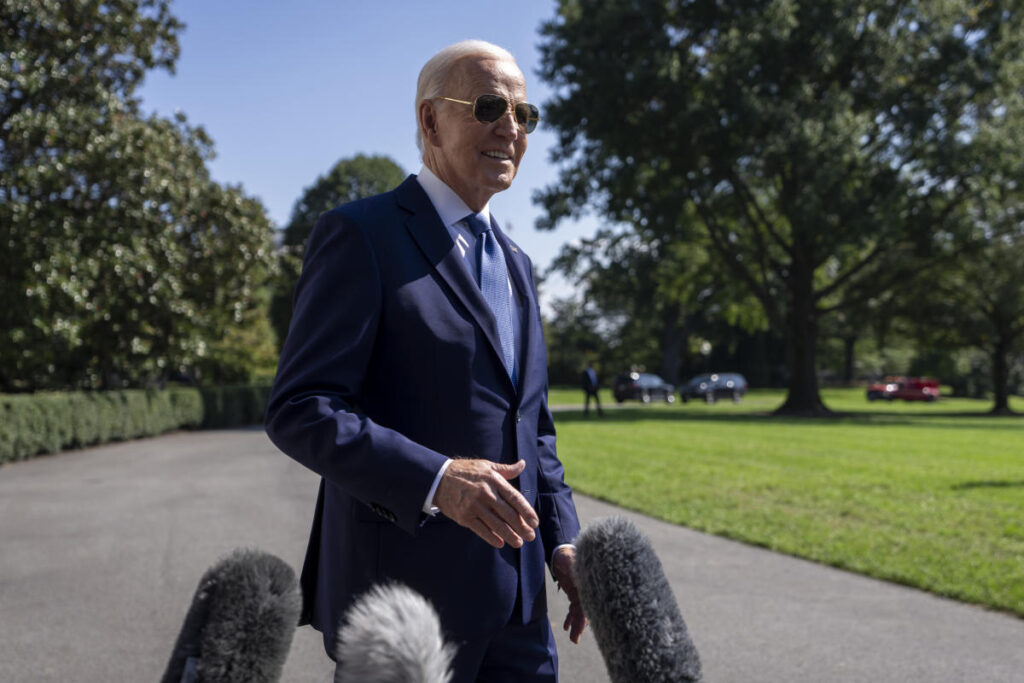As Election Day approaches, Vice President Kamala Harris is diligently working to sustain the diverse coalition of voters that propelled President Joe Biden to victory in 2020. This coalition comprised individuals who rallied against former President Donald Trump and were significantly impacted by the COVID-19 pandemic. In contrast, Trump is actively aiming to bolster his support among groups where he has previously shown strength, particularly among men without college degrees. He is also making efforts to diminish Harris’ backing among crucial demographics, such as Hispanic Americans. Insights from the AP VoteCast survey reveal the demographic landscape of the 2020 election, highlighting the bases of support for both candidates and suggesting potential outcomes for the 2024 election.
Biden’s win in 2020 was marked by clear majorities from several key voter groups, which poses a challenge for Harris in the upcoming race. To replicate Biden’s success, she will need to either secure the same wide-ranging support or cultivate a new winning coalition. The AP VoteCast data illustrates that Biden achieved significant backing from college graduates, women, younger voters, urban populations, and suburbanites. Additionally, he garnered robust support from non-white voters, securing approximately 90% of Black voters and 60% of Hispanic voters. Biden’s ability to attract moderate voters and sway some of Trump’s traditionally reliable demographics, particularly white women and young white voters, was also crucial to his victory.
Harris, unlike Biden, has tapped into grassroots energy by organizing large public rallies and leveraging targeted outreach efforts towards specific demographic groups. Her campaign has effectively utilized platforms such as Zoom to engage groups like “Black Women for Harris” and “Latinas for Harris,” while her direct interactions with influential figures like Oprah Winfrey and outreach to labor organizations underscore her focus on mobilizing crucial voting blocs. Moreover, her connection to historically Black colleges and universities adds another layer to her campaign strategy, aiming to attract young and diverse voters.
On the other hand, Trump has maintained his stronghold among white voters without college degrees and conservative rural voters. His coalition remains significant, as evidenced by VoteCast’s findings, which indicate that Trump received substantial backing from these groups. Trump’s ability to appeal to approximately 80% of white evangelical Christians and 60% of voters from small towns allows him to remain competitive, even without winning the popular vote in 2020. His current campaign strategy includes large rallies and social media engagement aimed at sustaining support from these demographics, while he also seeks to make inroads with Black and Hispanic voters by emphasizing outreach efforts in his speeches.
The context for the 2024 election has evolved from the tumultuous environment of 2020, where the pandemic played a central role in voter priorities. Currently, issues such as inflation, immigration, and abortion dominate the political landscape, which may provide an opportunity for Trump to regain ground, especially as his prior advantage on economic views continues to resonate with voters. As Harris seeks to counter this narrative, she is focusing on middle-class economic policies aimed at reducing costs and improving living standards, engaging with voters to reshape perceptions regarding economic management.
Finally, dissatisfaction with the prospect of a Biden-Trump rematch highlights a critical sentiment among voters longing for change. Polling indicates a significant portion of the electorate would be unhappy with either candidate being nominated again. This desire for new leadership may benefit Harris, who has garnered enthusiasm among segments of the Democratic base, particularly younger voters. With recent polling indicating that more people believe Harris could “change the country for the better” compared to Trump, her challenge will be to harness this momentum into a cohesive and expansive coalition leading up to Election Day, setting the stage for a potentially transformative electoral process.

